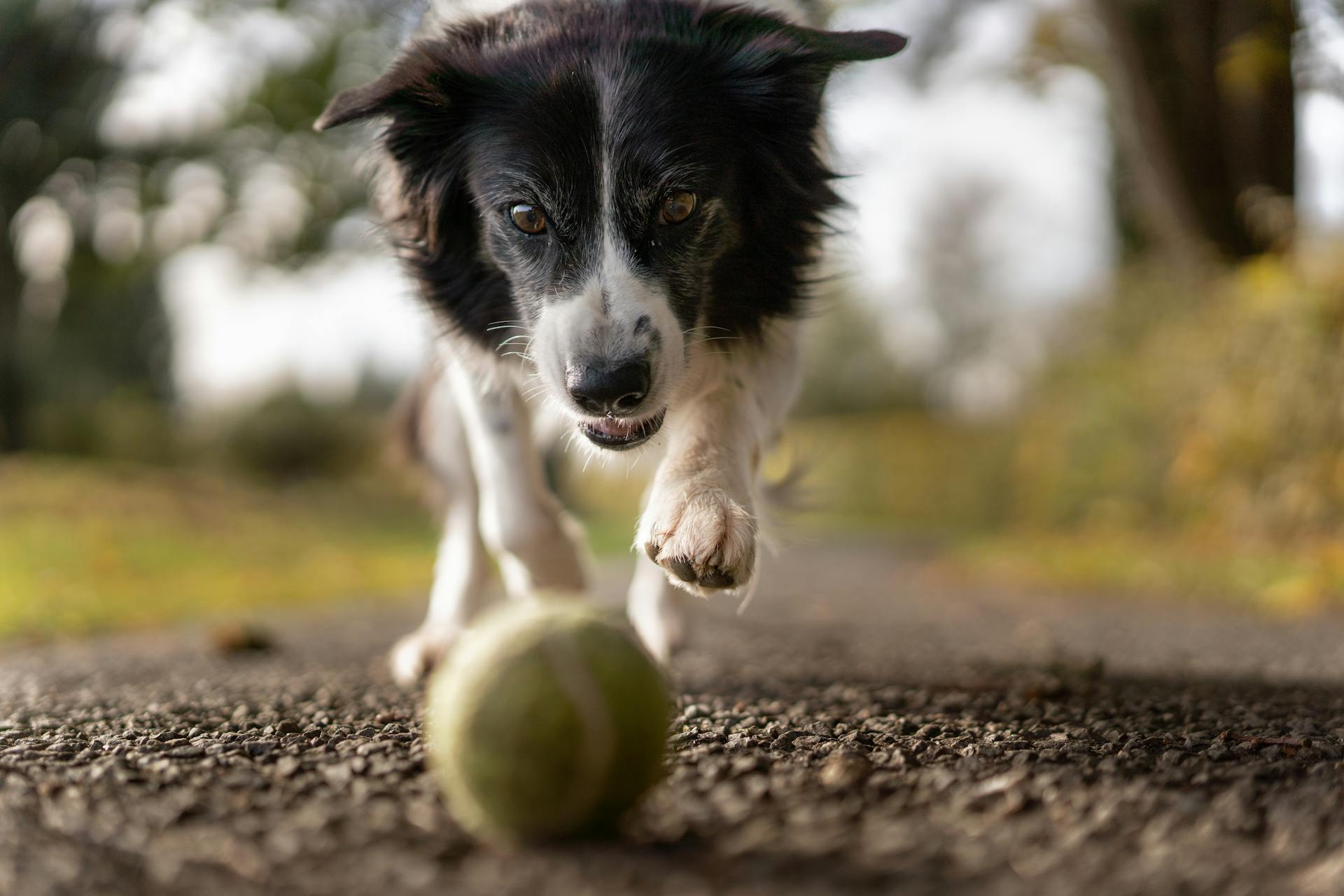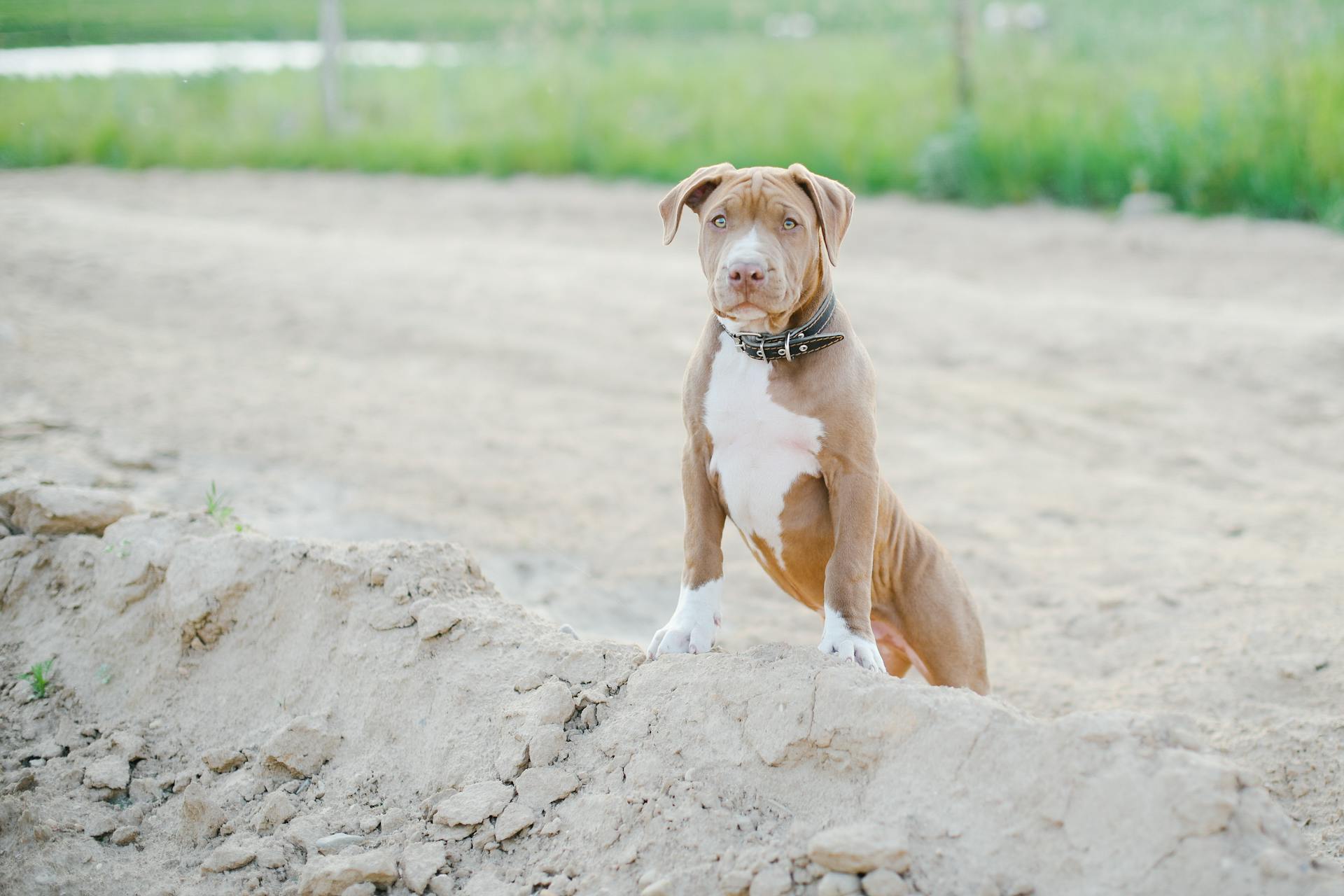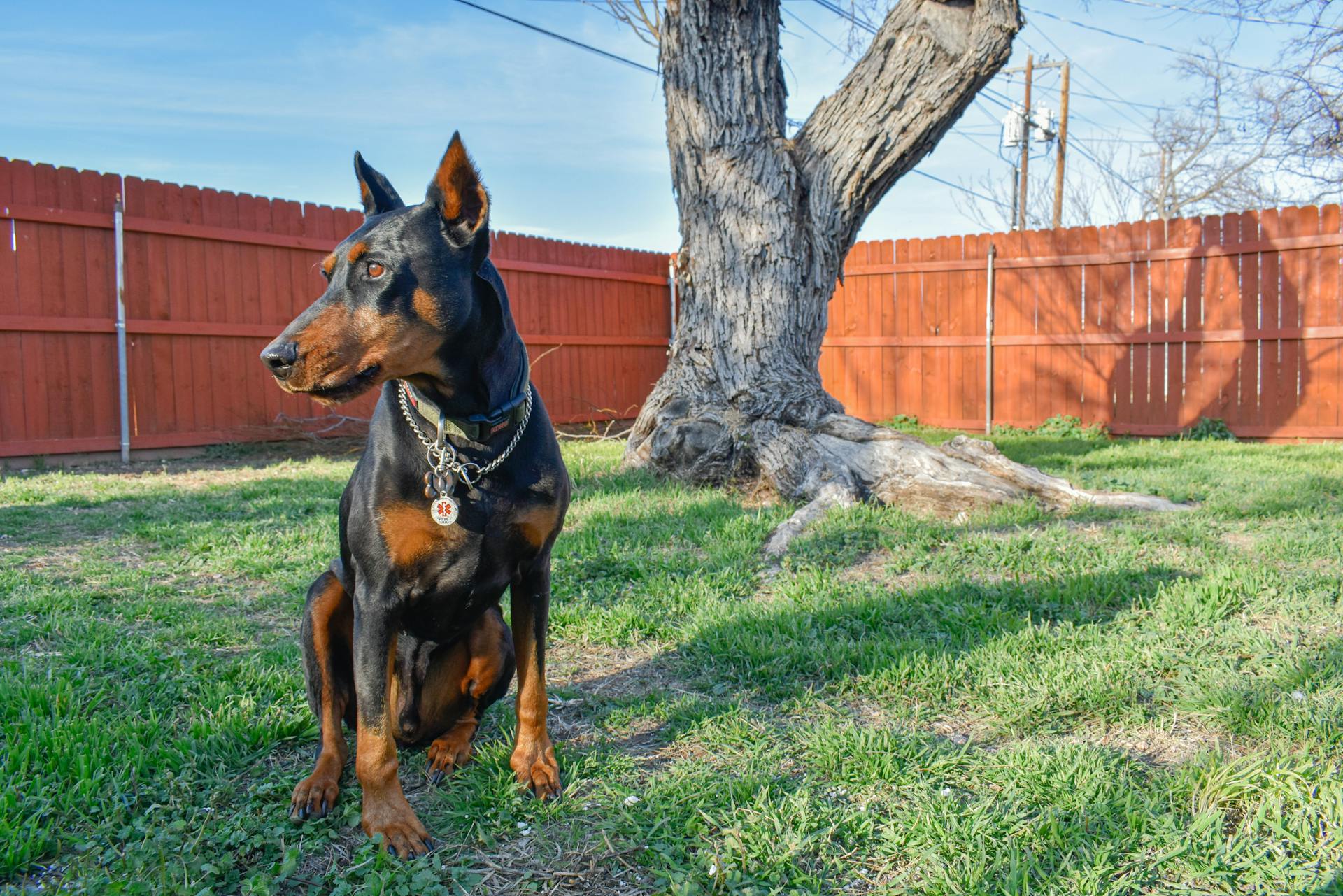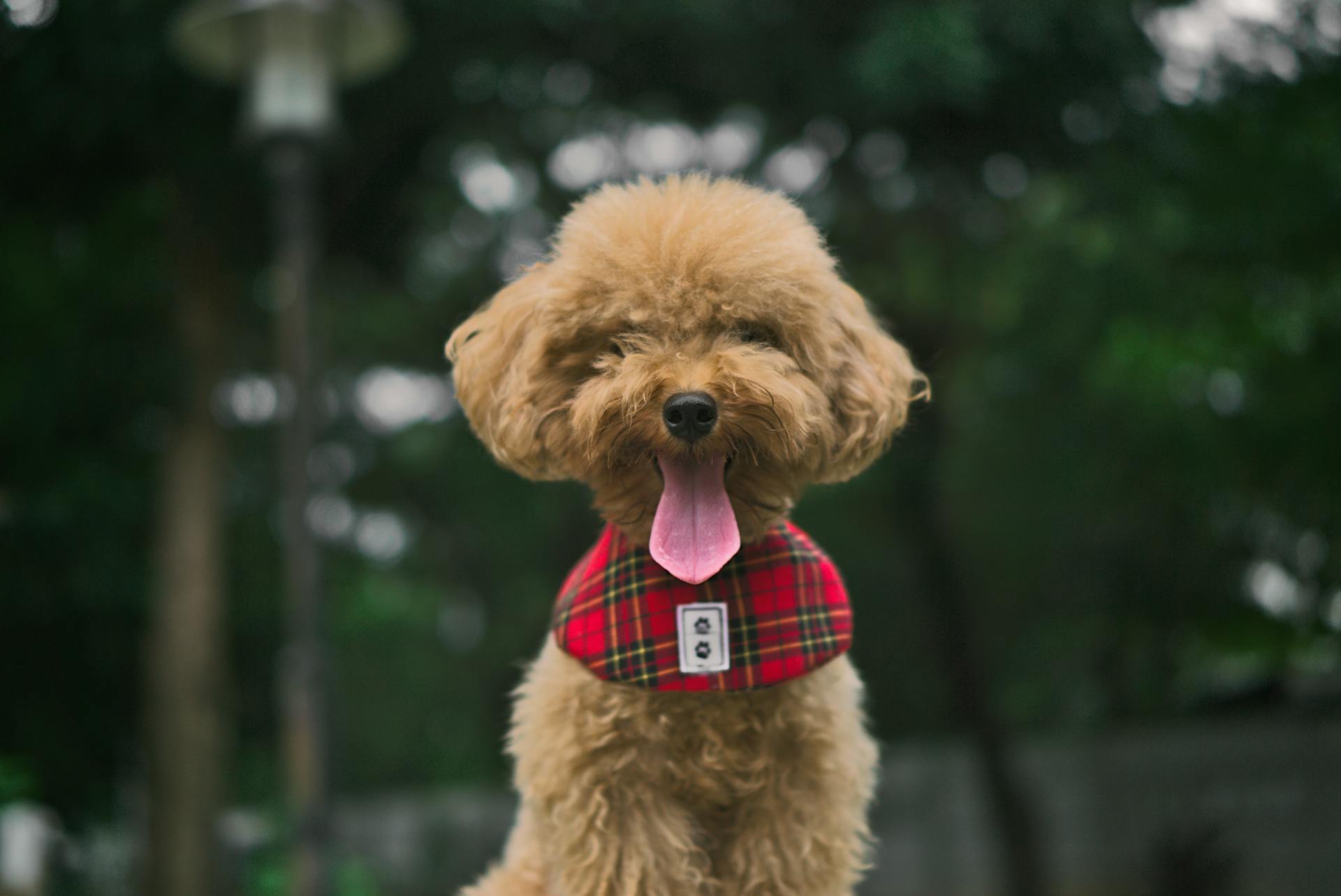
Poodle Prey Drive is a natural instinct that can be both a blessing and a curse for poodle owners. Poodles have a strong prey drive, which means they're naturally inclined to chase small animals, from mice to squirrels.
This instinct can be triggered by various stimuli, including sights, sounds, and even smells. Poodles are highly attuned to their environment and can quickly become fixated on a potential prey.
To keep your family safe, it's essential to understand the factors that contribute to your poodle's prey drive. For example, poodles are more likely to exhibit prey drive if they're not provided with adequate exercise and mental stimulation.
Poodles are highly intelligent dogs that require regular physical and mental activity to prevent boredom and destructive behavior. If your poodle is not getting enough exercise, it may become more prone to chasing small animals.
A unique perspective: How to Become a Dog Trainer for Service Dogs
Understanding and Managing Poodle Behavior
Poodles are known for their intelligence and high energy levels, but they also have a strong prey drive. This means they might exhibit behaviors like chasing small animals, herding people or other pets, or digging in search of rodents. Every dog is an individual, but poodles are generally more prone to these behaviors due to their breeding history.
To manage your poodle's prey drive, it's essential to understand how it shows up. You might notice your poodle chasing around moving objects, people, or other pets, or stalking around smaller animals like squirrels or birds. By recognizing these behaviors, you can take steps to discourage them.
Redirecting your poodle's attention away from potential prey is key. If you see your poodle spot something and begin to hunt, don't yell or scold – it could make things worse. Instead, engage and distract your poodle with a toy or whistle to shift their attention away from the prey.
Here are some common signs of prey drive in poodles:
- Chasing around moving objects, people, or other pets
- Stalking around smaller animals like squirrels or birds
- Herd around people or other pets
- Dig around your garden (in search of rodents)
By being aware of these signs and taking proactive steps to manage your poodle's prey drive, you can help keep them safe and happy.
Understanding Your Dog's Behavior
Understanding your dog's behavior is key to building a strong bond with them. Recognizing the signs of prey drive is crucial, as it can help you discourage unwanted behaviors.
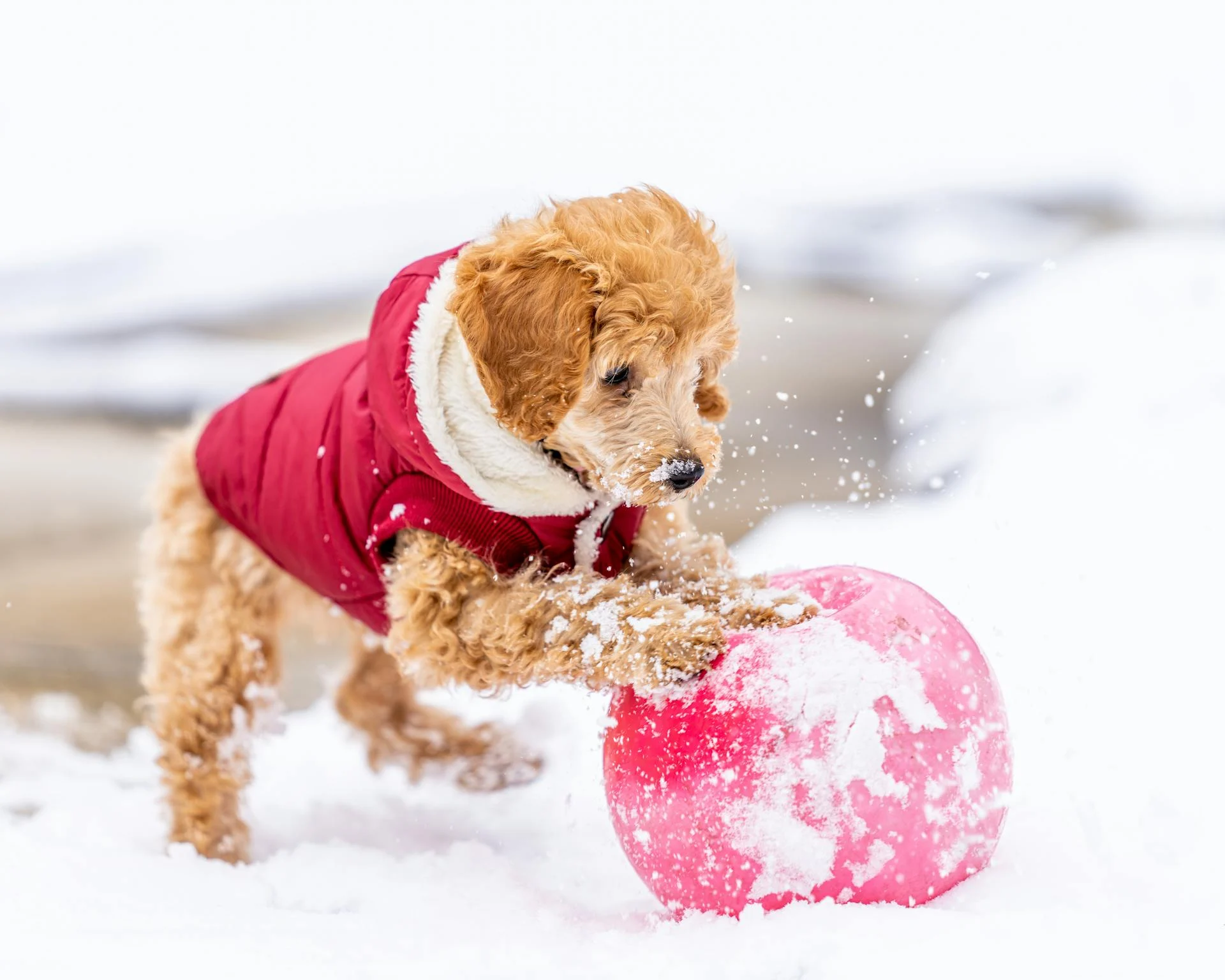
Prey drive can manifest in various ways, including chasing moving objects, stalking smaller animals, herding people or pets, and even digging in the garden. By identifying these behaviors, you can take steps to manage them.
Not all dogs have a strong prey drive, but breeds that have been systematically bred to pursue or hunt are more likely to exhibit these behaviors. Breeds like the rat terrier and saluki are examples of this.
Understanding the context of your dog's behavior is essential. For instance, your dog might chase squirrels at the dog park, but remain calm when walking with you on a leash. This shows that they have a strong prey drive, but it's not necessarily a cause for concern.
To manage your dog's prey drive, consider the following:
- Observe your dog's behavior in different contexts to identify patterns.
- Use positive reinforcement training to teach your dog alternative behaviors, such as "come" or "leave-it".
- Consider the breed of your dog and research their potential prey drive tendencies.
- Seek the help of a board-certified veterinary behaviorist or certified animal behavior consultant if you're having trouble managing your dog's behavior.
Manage Your Dog's Welfare
Managing your poodle's welfare is crucial to ensure their safety and happiness. Poodles are intelligent and loyal companions that can thrive in various environments when their natural instincts are nurtured and guided with care and expertise.
Their hunting instincts and protective nature can make them capable hunters of small prey and fierce guardians of their families. It's essential to channel these instincts responsibly through proper socialization, training, and supervision.
You should figure out how your poodle's prey drive shows up, whether it's digging, chasing, or some other kind of behavior. Knowing how your poodle gets around "prey" can help you pre-empt a chase in advance.
Redirecting your poodle's attention away from "prey" by keeping them distracted with a toy or other activity can be an effective way to manage their prey drive. Be consistent when rewarding your poodle, such as when they're sitting quietly by your side or get successfully "distracted."
Here are some key tips to manage your poodle's prey drive:
- Redirect their attention with a toy or other activity
- Be consistent when rewarding them
- Keep them well-exercised, as a physically and mentally active dog is less likely to chase down prey
Training your poodle to come when called can potentially save their lives by overriding their escape artist instincts. It's also crucial to make sure you don't reinforce their hunting or chasing behaviors by mistake, as this can lead to them chasing a ball, toy, or another pet somewhere dangerous.
You might enjoy: Shock Collar for Dogs Chasing Cars
Poodle Prey Drive and Small Animals
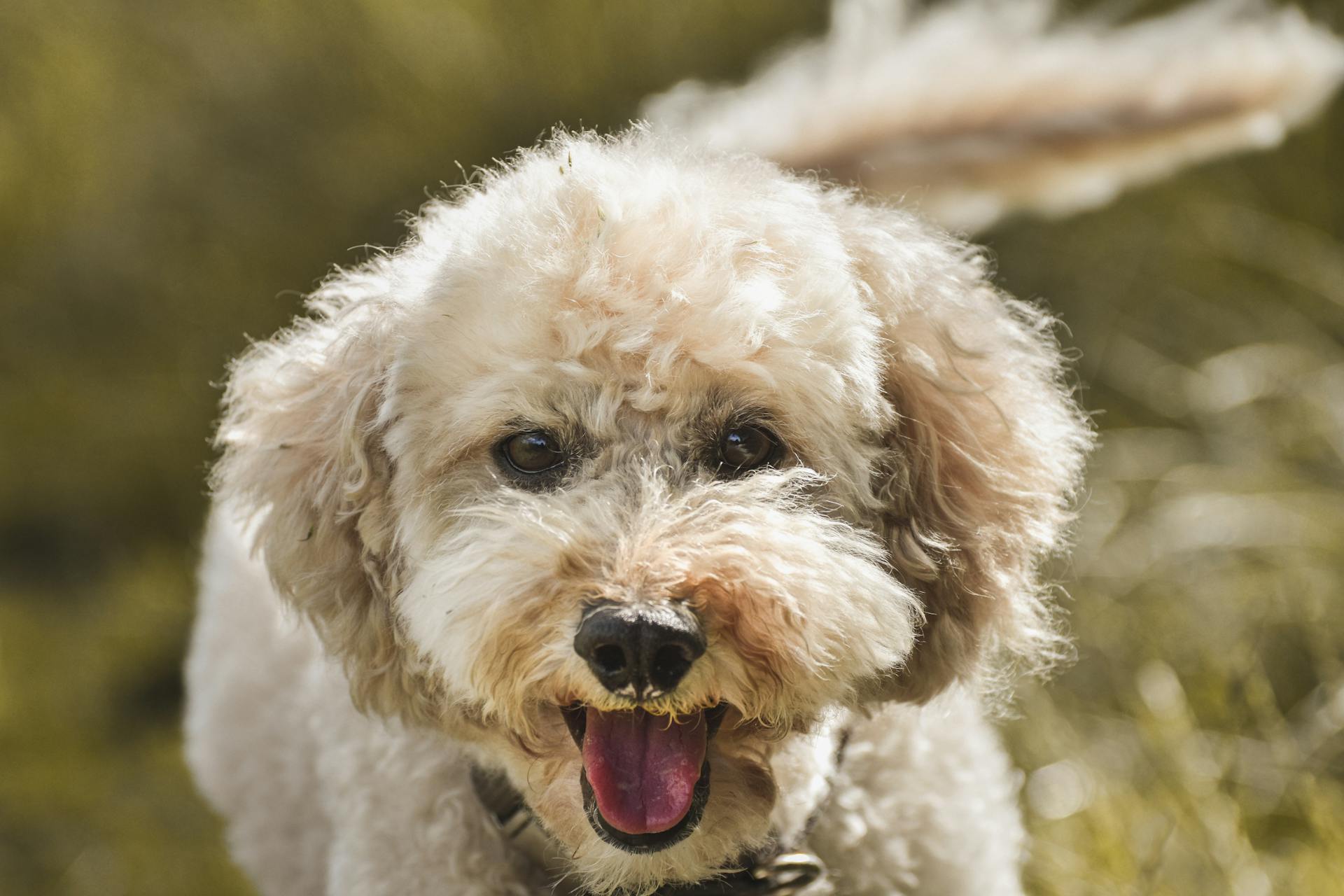
Poodles have a strong prey drive that can be triggered by small, scurrying animals like mice, rats, and rabbits.
Their agility, intelligence, and hunting instincts make them adept at catching these tiny critters, especially if they've been exposed to such prey during their formative years.
Mice, rats, and rabbits are considered a poodle's natural quarry, thanks to their water retriever ancestry.
Early socialization and training are crucial to teach poodles to coexist peacefully with other pets, including cats.
Poodles may view unfamiliar cats as potential prey, and their hunting instincts can be triggered by a cat's sudden movements or fleeing behavior.
To mitigate this risk, owners should channel their poodle's instincts responsibly through proper socialization, training, and supervision.
Poodles are intelligent, loyal companions that can thrive in various environments when their natural instincts are nurtured and guided with care and expertise.
For another approach, see: How to Stop Dog Aggression towards Cats
How to Train a Dog
Training a dog with a strong prey drive requires patience, consistency, and positive reinforcement. You need to understand how your dog's prey drive shows up, whether it's chasing, digging, or herding.
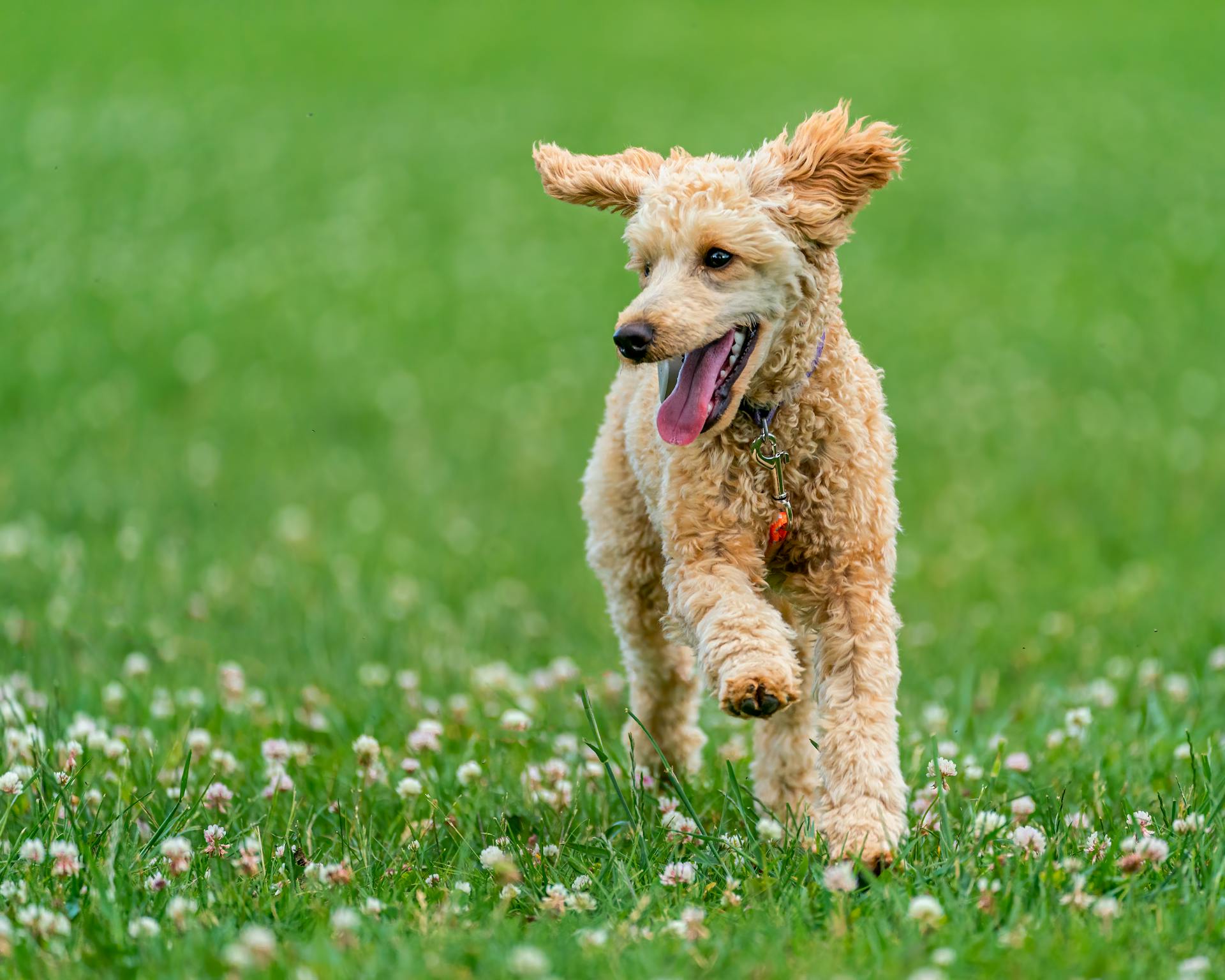
To figure out how your dog's prey drive shows up, keep an eye out for specific behaviors like chasing moving objects, stalking smaller animals, or herding people or other pets. You can then use this information to discourage or redirect their attention.
Redirecting your dog's attention away from "prey" is key. Keep them distracted with a toy or other activity to prevent a chase in advance. Consistency is also crucial when rewarding your dog for good behavior, such as sitting quietly by your side.
Consistency when rewarding your dog is essential. You should only reward them when they're sitting quietly by your side or successfully distracted. This helps prevent reinforcing hunting or chasing behaviors by mistake.
Training your dog to come when called is vital. A reliable recall can save their lives by overriding their escape artist instincts. Regular exercise and mental stimulation can also help reduce prey drive.
Here are some tips to help you manage your dog's prey drive:
- Keep your dog well-exercised to reduce the likelihood of chasing prey.
- Train your dog to come when called to prevent them from escaping.
- Redirect your dog's attention away from "prey" with toys or other activities.
- Be consistent when rewarding your dog for good behavior.
Remember, every dog is an individual, but breeding makes a difference. Certain breeds, like Poodles, have been designed to exhibit strong prey drive behaviors. However, proper socialization, training, and supervision can help channel these instincts responsibly.
Potential Dangers and Conclusion
If your poodle's prey drive is strong, it can lead to potentially dangerous situations, especially if they're not properly trained or restrained.
Chasing after cars is a major concern, as your poodle could get injured by a passing vehicle.
Distracted by prey, your poodle may ignore your commands and get lost, miles away.
In such situations, a GPS Dog Tracker can be a lifesaver, allowing you to locate and retrieve your poodle in case of potential danger.
Here are some potential dangers your poodle may face due to their strong prey drive:
- Chasing after cars and getting injured
- Getting lost, miles away, due to distraction by prey
- Chasing after dangerous animals that might fight back
- Come into contact with poisonous substances or animals
Frequently Asked Questions
Can you fix high prey drive in dogs?
High prey drive in dogs can be managed with consistent training and exercises that minimize distractions
Sources
- https://www.foundanimals.org/control-dogs-predatory-chase-drive/
- https://miniaturepups.com/poodle-predatory-instincts/
- https://www.dogsey.com/showthread.php
- https://tractive.com/blog/en/safety/hunting-behavior-in-dogs
- https://www.dailypaws.com/dogs-puppies/dog-behavior/dog-psychology/what-does-it-mean-when-a-dog-has-strong-prey-drive
Featured Images: pexels.com
